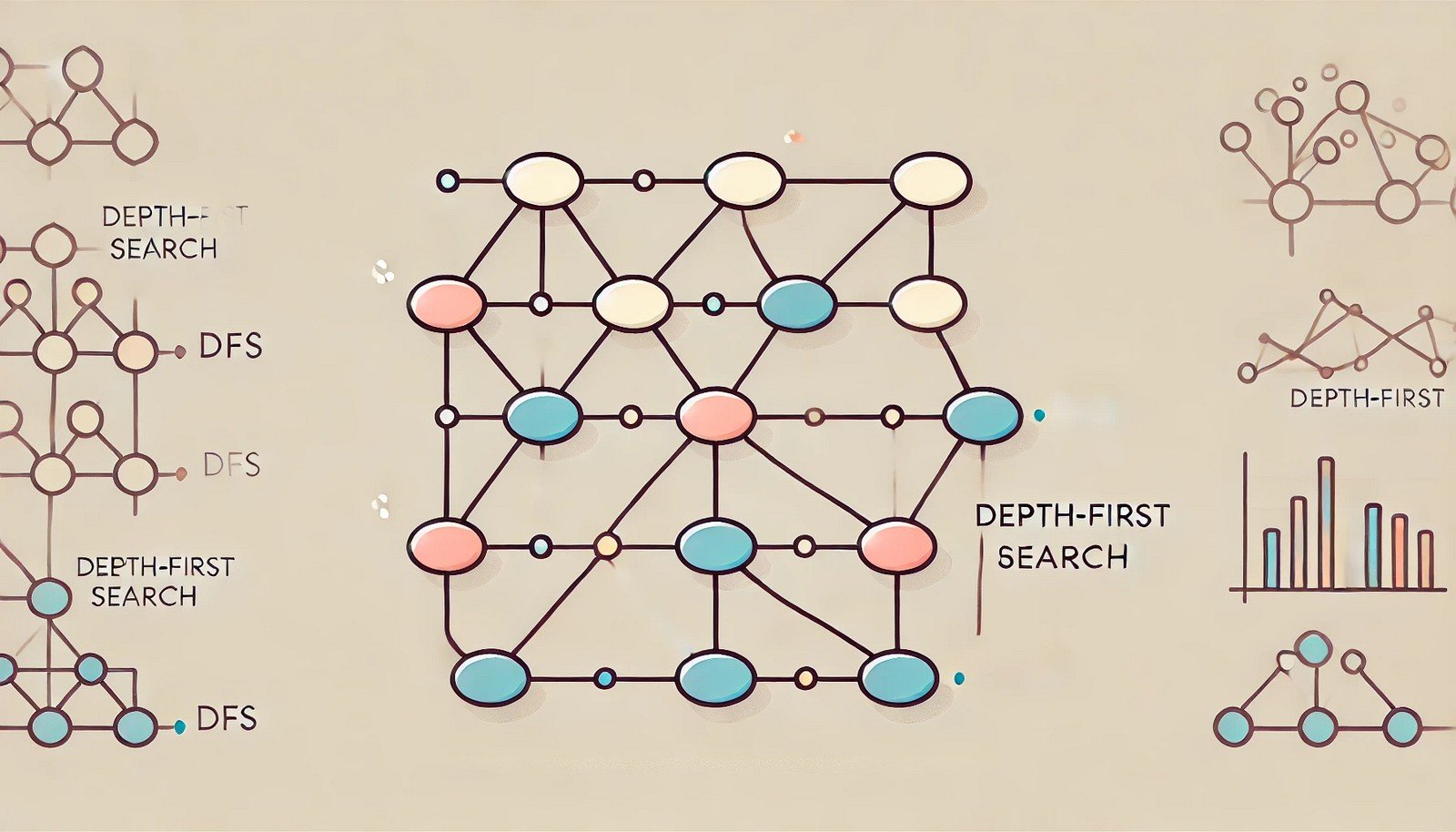Depth-First Search
 (Representational Image | Source: Dall-E)
(Representational Image | Source: Dall-E)
Quick Navigation:
- Depth-First Search Definition
- Depth-First Search Explained Easy
- Depth-First Search Origin
- Depth-First Search Etymology
- Depth-First Search Usage Trends
- Depth-First Search Usage
- Depth-First Search Examples in Context
- Depth-First Search FAQ
- Depth-First Search Related Words
Depth-First Search Definition
Depth-First Search (DFS) is an algorithm for traversing or searching through tree or graph data structures. It starts at the root (or any arbitrary node) and explores as far as possible along each branch before backtracking. DFS uses a stack to keep track of the nodes, either through recursion or an explicit stack data structure. It is commonly used for solving maze problems, topological sorting, and detecting cycles in a graph.
Depth-First Search Explained Easy
Imagine you’re exploring a maze. You walk down one path as far as you can go. If you hit a dead end, you go back to the last intersection and take a new path. Depth-First Search works in the same way: it goes as far as possible down one path before backtracking and trying another path.
Depth-First Search Origin
Depth-First Search has its origins in graph theory, introduced by mathematicians to solve connectivity problems. Its practical applications in computer science began in the mid-20th century with advancements in algorithmic research.
Depth-First Search Etymology
The term “depth-first” comes from the strategy of exploring deep into a structure before moving laterally.
Depth-First Search Usage Trends
Depth-First Search remains a popular algorithm for traversing complex data structures. It is widely used in artificial intelligence for problem-solving, in compilers for syntax analysis, and in network traversal. With the rise of graph-based systems and social networks, its importance continues to grow.
Depth-First Search Usage
- Formal/Technical Tagging:
- Graph Theory
- Algorithm Design
- Artificial Intelligence - Typical Collocations:
- "DFS traversal"
- "DFS algorithm"
- "depth-first search recursion"
- "DFS in graph"
Depth-First Search Examples in Context
- Depth-First Search is used in solving maze puzzles by exploring all possible paths.
- Compilers use DFS to analyze code and check for syntax errors.
- DFS is useful in social networks for exploring connected components.
Depth-First Search FAQ
- What is Depth-First Search?
Depth-First Search is an algorithm for traversing graph or tree structures by exploring as far as possible along each branch before backtracking. - How does DFS differ from Breadth-First Search (BFS)?
DFS explores one branch completely before moving to another, while BFS explores all neighbors at the current depth level first. - What data structure does DFS use?
DFS uses a stack, either explicitly or through recursion. - What are practical applications of DFS?
DFS is used in maze solving, topological sorting, and cycle detection in graphs. - Is DFS more memory-efficient than BFS?
DFS can be more memory-efficient in sparse graphs but may require significant space in deeply nested graphs. - How does DFS detect cycles in a graph?
By keeping track of visited nodes, DFS can detect cycles if it revisits a previously visited node that hasn’t been fully explored. - Can DFS be used in directed graphs?
Yes, DFS can traverse both directed and undirected graphs. - What is backtracking in DFS?
Backtracking refers to the process of returning to the previous node when a dead end is reached. - How is DFS used in artificial intelligence?
DFS is used in problem-solving and game trees to explore possible moves. - Is DFS optimal for shortest path problems?
No, DFS is not optimal for shortest path problems; algorithms like BFS or Dijkstra’s are more suitable.
Depth-First Search Related Words
- Categories/Topics:
- Graph Theory
- Algorithm Design
- Data Structures
- Artificial Intelligence
Did you know?
Depth-First Search plays a critical role in web crawlers. It helps search engines explore and index deep links within websites, ensuring comprehensive content indexing.
PicDictionary.com is an online dictionary in pictures. If you have questions or suggestions, please reach out to us on WhatsApp or Twitter.Authors | Arjun Vishnu | @ArjunAndVishnu

I am Vishnu. I like AI, Linux, Single Board Computers, and Cloud Computing. I create the web & video content, and I also write for popular websites.
My younger brother, Arjun handles image & video editing. Together, we run a YouTube Channel that's focused on reviewing gadgets and explaining technology.



Comments powered by CComment